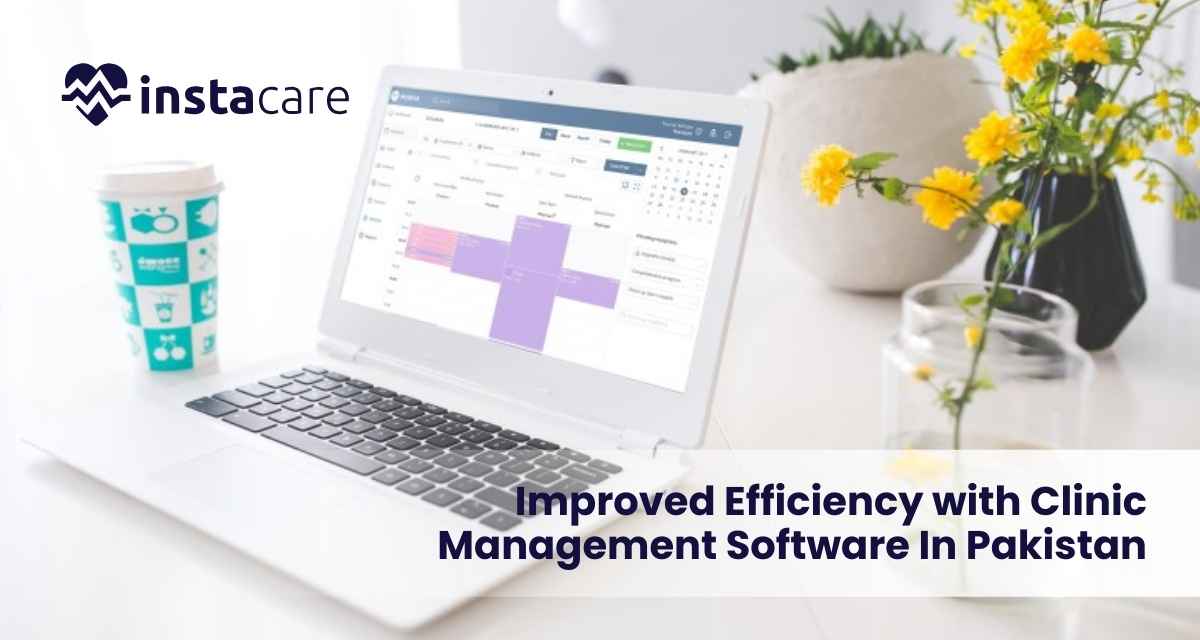Last updated on Wednesday, 18, September, 2024
Table of Contents
How InstaCare Improved Efficiency with Clinic Management Software In Pakistan?
In this health industry, efficiency is something that becomes an imperative to ensure quality care to the patients. With InstaCare operating at several clinics, huge difficulties were being faced in managing appointments, recording, and setting up communication with the patients. Feeling these problems and wanting to streamline operational efficiency, InstaCare opted for a full-fledged software solution to manage its clinics. Here is the case study on InstaCare’s journey: the challenges it faced, the solutions it implemented, and the significant improvements it saw.
The patient population was enormous, and patient populations were diverse. As the patients increased, the manual systems in place could no longer be continued. The extent of administrative work burdened staff members, increasing the waiting time at clinics and decreasing the level of patient satisfaction. A change was in order and InstaCare needed an intervention that streamlined operations and enhanced care.
Challenges Faced
1-Inefficient Appointment Scheduling
Creating appointment schedules was the most time-consuming process that InstaCare had to undertake. The patients seldom created sufficient time to visit, filling up the calendar, hence many opportunities for care were missed. The long waiting times and the inability to make easy reservations of appointments frustrated both the patient and the workers.
2-Manual Record Keeping
The patient records were kept manually, and this resulted in a greater likelihood of errors, as well as slowness in accessing needed information. In a busy clinic setting, there is a need for quick retrieval of patient information to ensure proper diagnosis and treatment. This was one of the major drawbacks of the traditional system- besides slowing down activities, it also watered down the quality of care.
3-Communication
Effective communication is the key in health settings. In this respect, InstaCare was characterized by erratic staff and patient communication. This caused miscommunication, non-attendance, and dissatisfaction among patients. There was no directed reporting system to ensure that the care coordination among the staff was effective.
4-Unorganized Reporting
InstaCare lacked reporting capabilities. Lacking real-time data, the clinic had no way of understanding performance. There could be no ways of monitoring patient outcomes or financial health. They cannot therefore understand where they can improve or what decisions in resource use require adjustments.
The Solution: Clinic Management Software
InstaCare countered the above challenges by rolling out a strong software solution of clinic management. These consisted of a few key functionalities the aim of which was meant to simplify activities and possibly enhance better patient care:
Online Appointment Booking
The new system enables a patient to easily make appointments through an online portal, which is user-friendly. This has made it easier for patients and relieved the task of administration from the staff.
Electronic Health Records (EHR)
All the information of patients was digitized in adopting EHRs. Health care providers accessed patient records in real-time, hence increasing the speed and quality of care produced for the patients. Coordination among staff members also improved with access to EHRs.
Automatic Reminders
The software automatically reminded patients of the date of their appointments through SMS or email. This feature greatly reduces lost appointments since patients are alerted about the dates of their appointments.
Reporting Tools
The software provided thorough reporting capabilities with patient demographics, appointment trends, and financial performance. These helped in making data-driven, informed decisions while acting to streamline the operations of the clinic.
Implementation Process of Clinic Management Software
The implementation of clinic management software is a significant process that takes effort, proper planning, and strategic execution. InstaCare implemented it in a structured manner so that the transition was unnoticed:
1-Needs Assessment
InstaCare began with an assessment of its current operations. In the process, it established specific needs and requirements by garnering input from the staff, clinicians, and patients. This would ensure that the software adopted solved real problems the clinic would have to face.
2-Software Selection
After weighing all the options, InstaCare settled on a software solution that most closely resembled their needs. Some of the key factors InstaCare considered included user-friendliness, scalability, and the level of customer support provided by the software vendor.
3-Training and Onboarding
Staff training was part of the implementation process. InstaCare conducted detailed training for all employees to make it easy for them to use the new system. The training packages included workshop hands-on and online guides to enable staff members learn through self-learning at their own convenience.
4-Data Migration
The available patient records had to be migrated. This was done in a careful manner to avoid loss of data. Checking information was enough time taken by the clinic to check their details for accurate transfer to the new platform.
5-Go-Live and Support
The software was implemented after a successful pilot phase. InstaCare remained constantly visible at each point where any queries or doubts might be there in the minds of the people while shifting to the new process. This ensured the participation of the staff in this movement, and accordingly, everything was executed well.
Results and Gains with Clinic Management Software
The clinic management software implementation greatly changed the operations of InstaCare. Some of the notable benefits included;
1-Enhanced Experience of Patients
Online bookings and auto alerts made it easier for the patients to book an appointment. It improved the chances of patients attending scheduled appointments since it reduced missed appointments by 30%. The general ratings of patient satisfaction later improved due to appreciation of the system for being faster as well as convenient for the patients.
2-Efficiencies
The amount of administrative time the staff at InstaCare used to waste was greatly reduced, and they were able to take care of more patients. The drastic time taken by management of appointments and records highly improved the workflow of the clinic. This change did not only boost staff morale but also raised the standard of communication with the patients.
3-Improved Communication
The new software helped in improved staff communication. The clinicians could access any patient’s documents, notes, and their treatment plans, thus ensuring coordinated care.
Improved communication ensured that all the people involved were lined up in the same way, thus improving quality care in general.
4-Better Data Management
The immediacy of data input would also help InstaCare monitor patient outcomes and keep track of clinic performance. With the data-driven approach, it could point out areas of improvement and optimize resource usage. Decisions no longer become decision-making without proper, fact-based grounding.
5-Financial Growth
InstaCare’s revenues rose by 20% in the first year of the operation following the release of the software due to efficiency and patient management. The clinic could manage many levels of patients without losing on quality while experiencing financial growth and sustainability.
Conclusion
The decision of InstaCare to take the software for managing clinics completely revolutionized its business flow while introducing efficiency and improving patient care. Clinic management software helped InstaCare overcome the major concerns regarding making an appointment, maintaining patient records, and communication, thus building a firm platform for the growth and success of InstaCare in the healthcare industry. With the successful results of this change, it shows that technology played an imperative role in healthcare and established the new requirements of both patients and service providers.
FAQs
1-What is clinic management software?
Clinic management software is a technological tool that assists healthcare providers to manage their activities, such as scheduling and making appointments, patient records, billings, and reporting. This helps to channelize administrative functions for better efficiency.
2-How did InstaCare shortlist appropriate software?
InstaCare performed needs assessment to narrow down specific requirements and then narrowed down options of software. The choice was based on user-friendliness, scalability, and customer support.
3-What benefits did InstaCare experience after installing the software?
After installing the software, InstaCare felt satisfied with patients and saw improvement in the operational performance of the facility. The communication skills among the employees also improved, and data management improved significantly along with increased revenues.



